I am designing a electrical device for a research project (I'm a PhD student, but unfortunately not EE!). More info on the device can be found at http://iridia.ulb.ac.be/supp/IridiaSupp2012-002/
The last prototype had a problem with the power supply, and thus I tried to overcome the problems by designing a new and better one. As the device is powered by a Lithium-Ion battery, I decided to use a LTC3536 buck/boost switching regulator: http://cds.linear.com/docs/en/datasheet/3536fa.pdf
I basically used the reference implementation (page 1 of the datasheet) for a 1A/3.3V power supply as seen here:

(source: ulb.ac.be)
There are three separate ground planes: PGND, coming from the battery, GND, the normal ground, and AGND for analog sensors etc.
This is the board as I designed it in Eagle. I already noticed some deviations from the reference design, for example, C3 and C4 should be places a lot closer to the LTC (U3):

(source: ulb.ac.be)
This is the output that I see on VCC (with or without load, Vin=4.7V)
As you can see, Vpp is huge! It's smaller for Vin<4.3V, but still quite substantial.

(source: ulb.ac.be)
I did a bit of trial-and-error by moving C3 and C2 closer to the LTC, and adding in another 1µF cap to C7. This didn't help much. I then replaced C7 with a 220µF cap instead of the 22µF mentioned in the datasheet. With this, Vpp is ~200mV. This is a lot better but still a long way from what is specified in the datasheet. Additionally, this is only the case for Vin>4.3V; below this threshold Vpp is still over 2V. I guess it's the boost vs. the buck regulation that makes the change, but I don't really see how I can correct it.
Now the questions:
- I was wondering if I made a mistake that is obvious to the trained eye?
- Why is Vpp so huge, when the noise given in the datasheet is only 40mV?
- Is there another way to fix this other than randomly dropping in different output capacitors?
